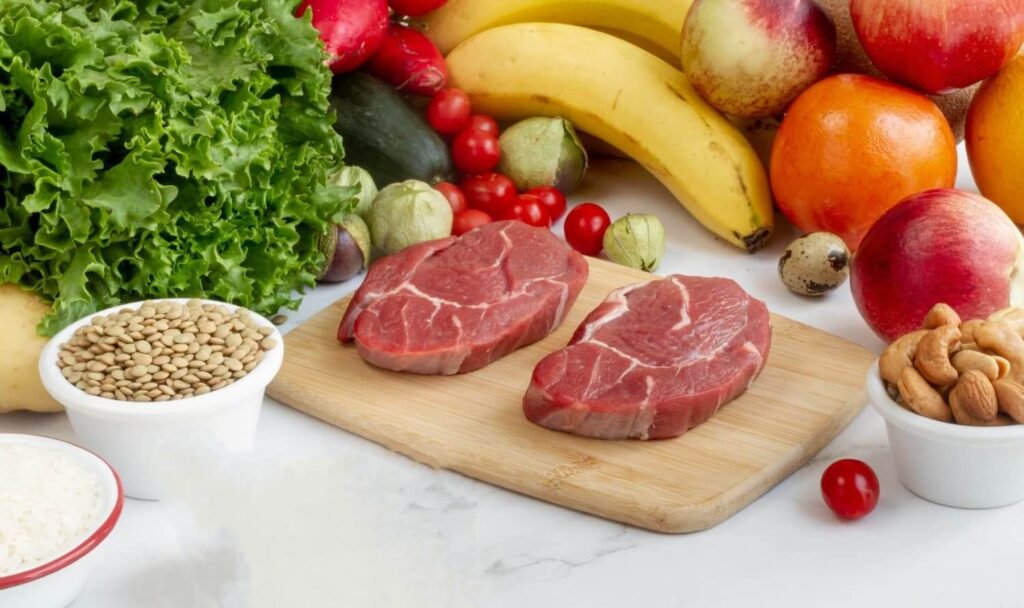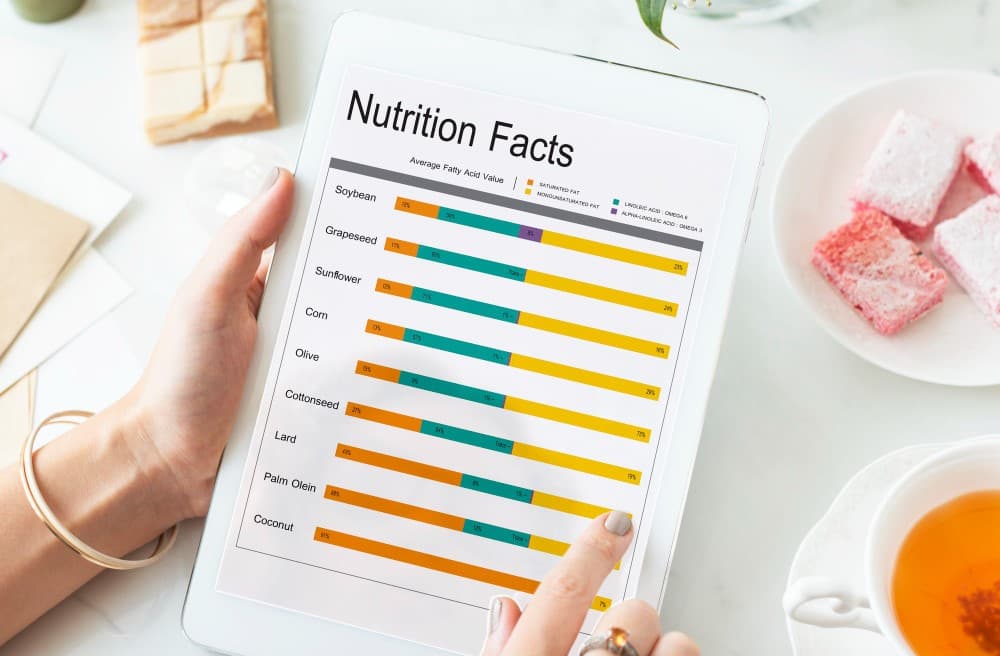In the quest for optimal health and performance, many fitness enthusiasts turn to specialized diets, and one such approach gaining popularity is the vertical diet.
Focused on quality nutrition and tailored meal plans, the Vertical Diet offers a systematic way to fuel your body efficiently.
In this guide, we’ll delve into creating a successful vertical diet meal plan that aligns with your fitness goals.
I. Understanding the Vertical Diet
The vertical diet is a strategic approach to nutrition, particularly tailored for individuals seeking substantial muscle mass, strength, and overall performance enhancement.
This diet has gained traction among athletes and fitness enthusiasts due to its emphasis on nutrient-dense, easily digestible foods. Here, we’ll explore the key principles and components that define the vertical diet.
To kickstart your vertical diet journey, explore a selection of high-quality lean red meat options. “Unleash Now!”. These lean cuts, rich in essential proteins, form the foundation of the Vertical Diet.
Principles of the Vertical Diet:
1. Red Meat Emphasis:
At the core of the Vertical Diet is the incorporation of red meat, particularly lean cuts like bison and beef. These meats provide a powerhouse of proteins, essential for muscle development and overall health.
2. White rice as the primary carbohydrate source:
White rice serves as the primary carbohydrate source in the Vertical Diet. Its quick digestibility makes it an excellent energy source, supporting the intense demands of training and performance.
3. Low-FODMAP Vegetables for Digestive Ease:
Digestive health is a priority in the Vertical Diet, and low-FODMAP vegetables play a crucial role in ensuring easy digestion. These vegetables are chosen for their minimal impact on the digestive system.
Dive into a selection of nutrient-dense white rice options “Discover Your Power!”. These varieties, carefully curated for their nutritional value, align perfectly with the Vertical Diet.
The Vertical Diet is strategically designed for athletes and individuals with specific performance-oriented goals. It’s not just a diet; it’s a comprehensive approach to fueling the body for optimal results.
Explore a range of nutritional supplements “Seize the Awesomeness!”. These supplements, when integrated into the Vertical Diet, can enhance performance and address specific dietary needs.
Why the Vertical Diet Works:
The success of the Vertical Diet lies in its simplicity and focus on key nutritional components. By prioritizing nutrient-dense foods and optimizing digestion, it provides a solid foundation for achieving peak physical performance.
In the next section, we’ll delve into the practical aspects of incorporating the Vertical Diet into your routine and crafting a personalized meal plan that aligns with your goals.
Learn more about the Vertical Diet and its benefits with comprehensive guides and resources “Ignite Your Journey!”
II. Key Components of a Vertical Diet Meal Plan
To create an effective vertical diet meal plan, it’s essential to understand the key components that form the backbone of this nutrition strategy.
This section explores the fundamental elements that make up a successful vertical diet meal plan, addressing common questions about food choices.
Crafting a vertical diet meal plan starts with selecting the right red meat options. “Elevate to Excellence!”. Explore a variety of lean cuts that provide the essential proteins necessary for muscle development.
1. Red Meat Selection:
The cornerstone of the Vertical Diet is the incorporation of high-quality red meat. Opt for lean cuts such as bison and beef, as they are rich in essential proteins, iron, and zinc. These nutrients play a crucial role in muscle development and overall well-being.
Explore a selection of premium lean red meat options in “Transform Your Reality!” to elevate the nutritional content of your vertical diet.
2. White rice as the primary carbohydrate source:
White rice stands as the primary carbohydrate source in the Vertical Diet Meal Plan. Its quick digestibility ensures a rapid energy release, making it an ideal fuel for high-intensity training and activities.
Enhance your Vertical Diet Meal Plan with nutrient-dense white rice options in “Spark Your Success!”. These choices contribute to the overall nutrient density of your meals.
3. Low-FODMAP Vegetables for Easy Digestion:
Digestive health is a priority in the Vertical Diet, and incorporating low-FODMAP vegetables is key. These vegetables are chosen for their minimal impact on the digestive system, promoting ease of digestion and nutrient absorption.
4. Can You Eat Pasta on the Vertical Diet?
While traditional pasta isn’t a staple in the Vertical Diet due to its gluten content, some variations like rice pasta or gluten-free options may be considered in moderation. Ensure they align with your dietary goals.
5. Can You Eat Bananas on the Vertical Diet?
Bananas, being a high-FODMAP fruit, are typically avoided on the Vertical Diet. Opt for lower-FODMAP fruits like berries, oranges, or strawberries to support your nutritional goals.
6. Is Oatmeal Part of the Vertical Diet?
Oatmeal, rich in nutrients and fiber, can be incorporated into the Vertical Diet. It provides sustained energy and can be a valuable addition, especially for those with specific dietary preferences.
In the next section, we’ll guide you through the practical steps of creating your personalized Vertical Diet Meal Plan, considering factors such as caloric requirements, nutrient balance, and individual goals.
For a well-rounded Vertical Diet Meal Plan, explore various nutrient-rich white rice options “Uncover the Extraordinary!”. These choices contribute to the balanced nutrient profile essential for your goals.
III. Creating Your Vertical Diet Meal Plan
Now that we’ve explored the fundamental components of the Vertical Diet, let’s dive into the practical steps of crafting a personalized Vertical Diet Meal Plan.
Whether you’re an athlete aiming for peak performance or an individual seeking a nutrition strategy for overall well-being, this section will guide you through the process.
To kickstart your Vertical Diet Meal Plan, explore a variety of high-quality lean red meat options. “Revolutionize Your Experience!”. These lean cuts are essential for providing the proteins necessary for muscle development.
1. Determine Caloric Requirements:
Before diving into the specifics, it’s crucial to understand your daily caloric needs. Consider factors such as your activity level, goals, and metabolic rate.
This step lays the foundation for creating a meal plan tailored to your unique requirements.
2. Nutrient Balance:
Achieving a balanced nutrient profile is key to the success of your Vertical Diet Meal Plan.
Ensure you’re getting an appropriate mix of macronutrients (proteins, carbohydrates, and fats) and micronutrients (vitamins and minerals) to support your overall health and fitness goals.
Explore various nutrient-dense white rice options “Catapult Your Journey!” to incorporate into your Vertical Diet Meal Plan. These choices contribute to the balanced nutrient profile essential for your goals.
3. Sample Vertical Diet Meal Plan:
Let’s put theory into practice with a sample meal plan:
Breakfast:
- Bison steak with white rice and spinach
Lunch:
- Beef stir-fry with low-FODMAP vegetables
Snack:
- Carrot and orange slices
Dinner:
- Grilled chicken with quinoa and mixed berries
This sample meal plan incorporates the key components of the Vertical Diet and ensures a diverse array of nutrients to fuel your body.
Elevate the nutritional content of your Vertical Diet Meal Plan with high-quality lean red meat options “Ride the Wave of Change!”. These choices contribute essential proteins for muscle development.
In the next sections, we’ll explore the benefits of following a Vertical Diet Meal Plan and its potential drawbacks, along with tips for long-term success.
Learn more about the Vertical Diet and its benefits with comprehensive guides and resources. “Epic Adventures Await!”
IV. Benefits of Following a Vertical Diet Meal Plan
Committing to a Vertical Diet Meal Plan comes with a range of advantages, making it a popular choice among individuals aiming for optimal health and performance.
Here, we’ll delve into the specific benefits you can expect when following a well-structured Vertical Diet Meal Plan.
Enhance the protein content of your Vertical Diet Meal Plan with a selection of high-quality lean red meat options “Master Your Destiny!”. These lean cuts are essential for muscle development and overall health.
1. Improved Digestion:
One of the primary benefits of the Vertical Diet Meal Plan is its focus on easily digestible foods. Reducing the burden on your digestive system can lead to improved nutrient absorption and overall digestive comfort.
2. Enhanced Nutrient Absorption:
The careful selection of nutrient-dense foods in the Vertical Diet contributes to enhanced nutrient absorption. Essential minerals such as iron, zinc, and selenium are readily available, supporting various bodily functions.
Explore various nutrient-dense white rice options “Fuel Your Passion!” to complement your Vertical Diet Meal Plan. These choices contribute to the overall nutrient density of your meals.
3. Quick Energy for Improved Performance: The combination of red meat and easily digestible carbohydrates, such as white rice, provides a quick and sustained source of energy.
This is particularly beneficial for athletes and individuals engaged in high-intensity training.
Incorporating these elements into your Vertical Diet Meal Plan contributes to enhanced performance and a more efficient and energetic daily life.
Elevate the nutritional content of your Vertical Diet Meal Plan with high-quality lean red meat option “Adventure Awaits – Click Here!”. These choices provide essential proteins for muscle development and sustained energy.
In the following section, we’ll explore the potential drawbacks of the Vertical Diet and how to mitigate them, ensuring a well-rounded understanding of this nutrition strategy.
Learn more about the Vertical Diet and its benefits with comprehensive guides and resources. “Revitalize Your Journey!”
V. Potential Drawbacks and How to Mitigate Them
While the Vertical Diet offers numerous benefits, it’s important to be aware of potential drawbacks.
Understanding these challenges and implementing strategies to mitigate them ensures a well-rounded and sustainable approach to this nutrition strategy.
Mitigate potential drawbacks by exploring a variety of nutrient-rich white rice options “Don’t Miss the Thrill!”. These choices contribute to the overall nutrient density of your Vertical Diet Meal Plan.
1. Restrictiveness:
One potential drawback of the Vertical Diet is its perceived restrictiveness. To overcome this, diversify your food choices within the diet. Experiment with different cuts of red meat, incorporate a variety of vegetables and explore alternative carbohydrate sources.
2. Nutrient Deficiencies:
Due to the emphasis on specific food choices, there’s a risk of nutrient deficiencies. Mitigate this by considering targeted supplements to address potential gaps in your nutrient intake.
Consult with a healthcare professional to identify specific needs.
Address potential nutrient gaps with a range of high-quality supplements “Dive into Greatness!”. These supplements complement your Vertical Diet Meal Plan for overall well-being.
3. Health Risks:
Some individuals may have health conditions that could be affected by the vertical diet. Before adopting this nutrition strategy, consult with a healthcare professional to ensure it aligns with your specific health needs.
4. Cost:
The cost of certain components of the vertical diet, such as high-quality red meat, maybe a consideration. Look for cost-effective options without compromising on the quality of your food choices.
Explore various cost-effective yet high-quality lean red meat options in “Unlock Your Potential!” to maintain the integrity of your vertical diet meal plan.
5. Unsuitability for Vegetarians and Vegans:
The Vertical Diet, with its emphasis on animal products, may not be suitable for vegetarians and vegans. For individuals following these dietary preferences, consider alternative strategies that align with your values and goals.
In the next section, we’ll provide tips for long-term success, ensuring that you can maintain the benefits of the vertical diet over an extended period of time.
Learn more about the vertical diet and its considerations with comprehensive guides and resources in “Fuel Your Passion!”.
VI. Tips for Long-Term Success
Long-term success with the Vertical Diet relies on sustainable practices and a commitment to ongoing health and fitness goals.
In this section, we’ll provide valuable tips to help you integrate the Vertical Diet into your lifestyle for lasting benefits.
Sustain your Vertical Diet Meal Plan with a variety of high-quality lean red meat options “Unleash Now!”. These choices contribute essential proteins for muscle development and overall well-being.
1. Adjust for Your Lifestyle:
Recognize that lifestyle factors play a crucial role in the long-term success of any diet plan. Tailor your Vertical Diet Meal Plan to accommodate your daily schedule, preferences, and overall lifestyle. Flexibility ensures you can adhere to your nutritional goals in various situations.
2. Diversify Your Food Choices:
To avoid monotony and address potential nutrient deficiencies, diversify your food choices within the Vertical Diet framework. Experiment with different cuts of red meat, explore a variety of low-FODMAP vegetables and consider alternative carbohydrate sources.
3. Variations for Athletes:
If you’re an athlete with increased caloric demands, adjust your Vertical Diet Meal Plan accordingly. Fine-tune portion sizes and nutrient ratios to support your energy needs while maintaining the core principles of the Vertical Diet.
4. Monitor and Adjust:
Regularly monitor your progress and be willing to make adjustments. If you find certain components of the Vertical Diet aren’t aligning with your goals or preferences, consider modifications while still adhering to the fundamental principles.
5. Consider Individual Goals:
Understand that individual goals vary, and the Vertical Diet can be tailored to meet different objectives. Whether aiming for muscle gain, weight loss, or general well-being, adapt your meal plan to align with your specific goals.
In conclusion, the long-term success of the Vertical Diet Meal Plan hinges on flexibility, diversification, and a keen understanding of individual needs.
By integrating these tips, you can enjoy the sustained benefits of this nutrition strategy.
Learn more about maintaining the success of your Vertical Diet with comprehensive guides and resources
Conclusion:
Crafting a successful Vertical Diet Meal Plan requires careful consideration of your nutritional needs.
By following these steps, you can enjoy the benefits of improved performance and overall well-being.
Remember, before making significant dietary changes, consult with a nutritionist or healthcare professional.
Explore comprehensive guides and resources on the Vertical Diet “Discover Your Power!”.
Frequently Asked Questions
1. What foods are on the Vertical Diet?
A. The Vertical Diet emphasizes nutrient-dense foods, including red meat, rice, vegetables, fruits, eggs, salmon, and dairy like yogurt and raw milk.
2. How do I start a Vertical Diet?
A. To start the Vertical Diet, assess your current diet, implement basics like red meat, rice, and easily digestible options, structure meals with a balance of nutrients, stay hydrated, and consider recommended supplements.
3. Can you lose weight on the Vertical Diet?
A. Yes, it’s possible to lose weight on the Vertical Diet by controlling portion sizes, tracking calorie intake, and ensuring a caloric deficit.
4. Is milk on the Vertical Diet?
A. Yes, milk is part of the Vertical Diet. Both conventional and raw milk are included as sources of protein, fat, and carbohydrates.
5. Vertical Diet Meal Plan to Lose Weight:
A. Modify the Vertical Diet for weight loss by controlling portions, tracking calories, and focusing on nutrient-dense options.
6. Vertical Diet Food List:
A. The Vertical Diet food list includes red meat, rice, vegetables, fruits, eggs, salmon, and dairy. Tailor it to your preferences and dietary needs.
7. Vertical Diet Meal Prep:
A. For meal prep on the Vertical Diet, batch cook, control portions, use airtight containers for storage, and plan for variety to prevent monotony.
Remember, it’s advisable to consult with a healthcare or nutrition professional before making significant changes to your diet.
Recent Posts
- How to get rid of pre-workout sickness?
- Apron Belly Exercises: A Guide to Tackling Stubborn Belly Fat
- Metabolic Workouts for Women: Igniting Fitness and Wellness
- Meat and Fruit Diet: A Flavorful Feast for Health and Wellness






